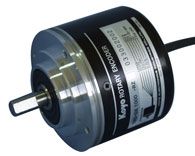Smart Polaris Encoder
Smart Polaris Encoder
Polaris encoder encoders are mainly used in CNC machine tools and mechanical accessories, robots, automatic assembly machines, automatic production lines, elevators, textile machinery, sewing machinery, machinery (fixed length), machinery (synchronization), woodworking machinery, plastic machinery, rubber Plastic machinery, drawing instruments, goniometers, convalescent radars, etc.

The incremental encoder converts the displacement into a periodic electric signal, and then converts this electric signal into a counting pulse, and the number of pulses is used to indicate the magnitude of the displacement. Sensors that directly output digital quantities are often used in motor positioning or speed measurement systems. Ensure that the power supply of the absolute encoder is within the rated range and is well isolated to prevent the large-scale starting electrical in the power grid from impacting the absolute encoder. The rotary northstar encoder is a device used to measure the speed. It is divided into single-channel output and dual-channel output. Technical parameters mainly include the number of pulses per revolution (dozens to thousands of them), and power supply voltage. Single output means that the output of the rotary encoder is a set of pulses, while the dual output rotary encoder outputs two sets of pulses with a phase difference of 90 degrees. The two sets of pulses can not only measure the speed, but also determine the direction of rotation. The materials of the encoder code disc are glass, metal, plastic. The glass code disc is deposited on the glass with very thin lines, which has good thermal stability and high precision. The metal code disc is directly engraved with through and impassable lines and is not fragile. However, because metal has a certain thickness, the accuracy is limited, and its thermal stability is an order of magnitude worse than that of glass. Plastic code discs are economical, and their cost is low, but accuracy, thermal stability, and life are worse. .





